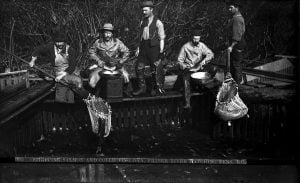Yonge Street, University Avenue, and Bloor Street are all popular roads entangled in the busy city of Toronto. Used by citizens as transportation routes, these roadways are a constant bustle of activity.
Toronto’s river system is also used as a heavy traffic route — by salmon. The river system in the city is made up of numerous man-made and natural waterways, from the Don to the Humber River. These water highways dominate a large part of the city, and one of their more frequent voyagers is salmon.
Every fall, thousands of coho and chinook salmon perform a salmon run, leaving Lake Ontario and making their way up the river system to find spawning grounds. They try to get as far north as they can to find cold water and gravel, appropriate for them to spawn in and lay eggs.
Rick Portiss, senior manager of Aquatic Monitoring and Management for the Toronto and Region Conservation Authority (TRCA) says that Toronto’s waterways are integral to the salmon’s life cycle.
“They are just as important as they have ever been,” he says.
The salmon’s ability to get to their destination, however, can sometimes be a challenge.
Implemented to help mitigate flooding after Hurricane Hazel in 1954, weirs (low dams used to regulate water flow) were placed in the Humber River to control erosion and manage water levels. These weirs became barriers for the salmon, preventing them from moving upstream.
In 2000, the Ministry of Natural Resources and the Conservation Authority would electroshock the salmon, place them in buckets and transport them to Woodbridge to get them to their spawning grounds, says Canadian historian Madeline McDowell. This allowed the salmon to get to where they needed to be to spawn.
Then in the early 2000s, several four metre wide trapezoidal notches were cut into the weirs to concentrate water flow and reduce the height of the weirs. This enabled the salmon to then move upstream without the need for human intervention.
Today, in September and October during the salmon run, these weirs along the Humber become popular meeting places for the public to come and observe the salmon. Each year, the TRCA runs an annual salmon festival, which Portiss says can see two to three thousand people.
“The locals, they come down, particularly to the first and second weirs, with their lawn chairs, says McDowell. “They cheer for the salmon leaping because they don’t always make it. That’s their entertainment on Saturday or Sunday, rather than watching the television or something like that.”
As a founding member of Heritage Toronto and the Toronto Historical Association, McDowell has a great love for the Humber River and the environment.
For Toronto residents like Giulio Villani, observing the salmon is something he does with his children and grandchildren.





